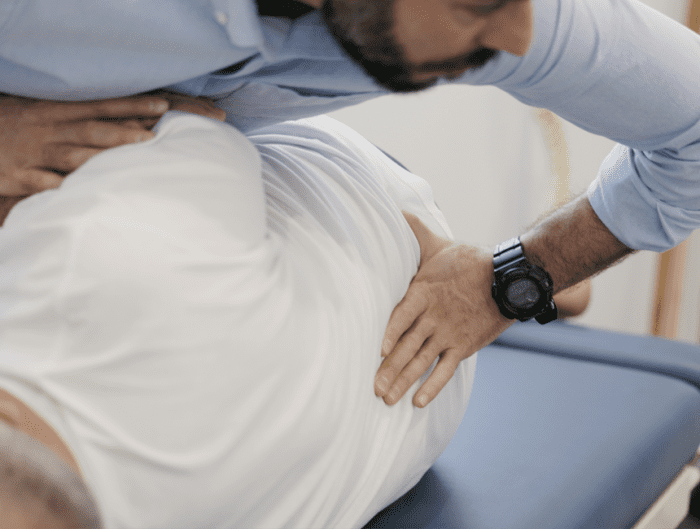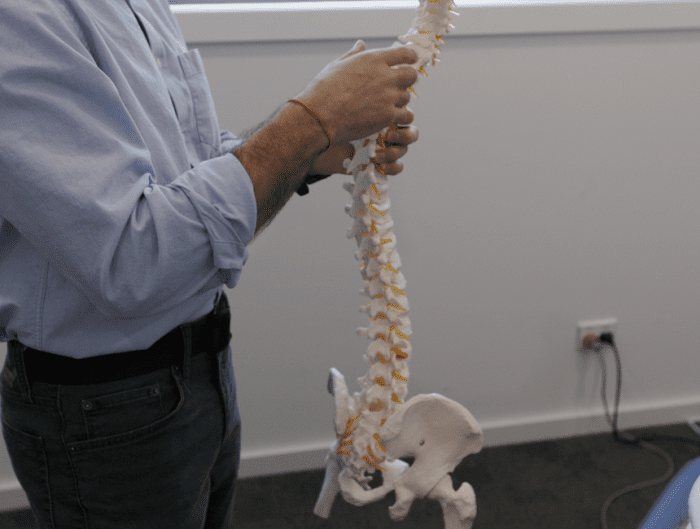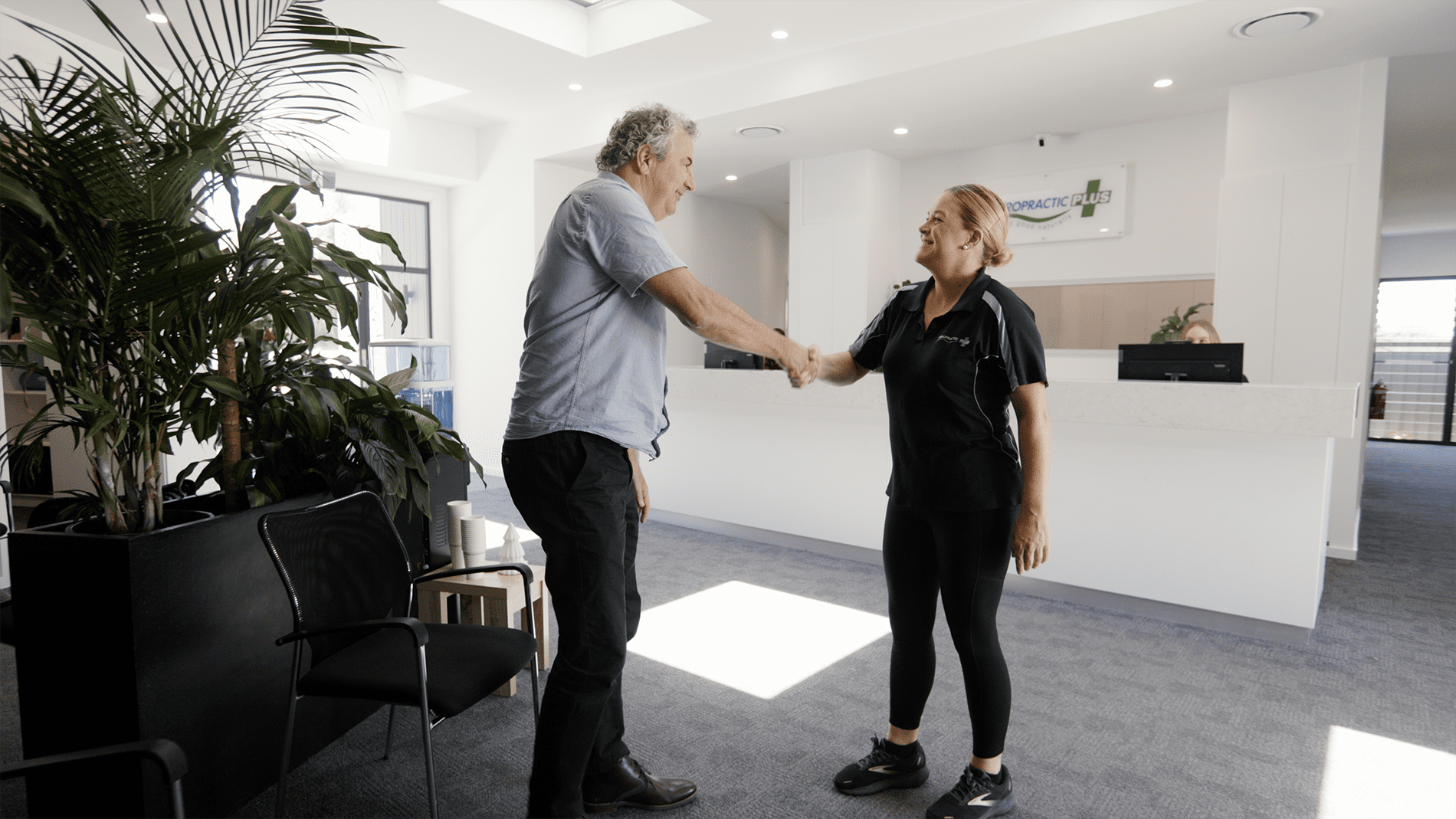Catch yourself slouching? Improve posture & relieve pain naturally with Chiropractic Plus.
Maintaining a neutral spine is key to preventing back pain and injury.
Whether caused by hunching over your phone, whiplash or anything in between, poor posture can lead to muscle fatigue, joint strain and other harmful consequences. Restore alignment and balance with a chiropractor for posture. At Chiropractic Plus, we will assess your posture to pinpoint the root cause of any concerns and provide a personalised plan for adjustments and pain relief. Our safe, non-invasive chiropractic techniques can help you to look and feel better naturally. Call us today or get in touch online.

How does a chiropractor help with posture?
A chiropractor can help with posture through natural techniques that realign the spine & take pressure off muscles, joints & ligaments.
At Chiropractic Plus, we’ll assess your posture before recommending a personalised plan of action for lasting correction. Here are some of the modalities this may include.
Posture assessment
Your chiropractor for posture will perform a physical examination of your spine. We are highly trained in identifying joint dysfunctions, muscle tension and painful areas that may require adjustment. This thorough assessment can include X-rays.
Chiropractic adjustment
Our posture chiropractors use non-invasive techniques, such as controlled manipulation and gentle mobilisation, to realign vertebrae and alleviate nerve pressure. This helps to correct postural issues, enhance mobility and reduce pain.
Prescribed exercise
Your chiropractic care plan may include an at-home rehabilitative routine that will help to improve your posture over time. Stretches are aimed at boosting flexibility, while postural exercises work to strengthen your bones, muscles and joints.
Lifestyle advice
After adjustments have been made, your chiropractor may offer education on how to maintain correct posture during day-to-day activities such as sleeping, walking, working and sitting. That way, you can prevent poor posture moving forward.
With help from a chiropractor for spine alignment, it may be possible to:
- Align bones and joints to reduce muscle strain
- Take stress off ligaments to minimise the risk of injury
- Use muscles more efficiently to conserve more energy
- Prevent muscle fatigue and restore balance in your back
Chiropractic care for common posture conditions
Kyphosis
Less kindly known as a hunchback, kyphosis refers to an excessive curvature of the upper back and rounded shoulders. It often forms with age as spinal discs or vertebrae deteriorate. That said, factors like genetics, poor nutrition, infection, and chemotherapy can also cause stiffness that leads to kyphosis.
Flatback
Flatback develops when the lower spine loses some of its natural curvatures. This causes you to lean forward with a particularly straight back, which in turn can bring pain and discomfort. This condition can be hereditary or caused by back surgery, vertebral compression and degenerative spine disorders like arthritis.
Swayback
Swayback, or lumbar lordosis, is when the hips and pelvis tilt in front of your vertical midline. In other words, the lower spine curves inward while your stomach and posterior stick out. This tightens back muscles when sitting and makes it look like you’re leaning back when standing. Both can weaken the core. Swayback may be caused by injury, obesity, spinal anomalies and neuromuscular disorders.
Tech neck
Hunching over your computer, phone or steering wheel? Ears and shoulders are supposed to line up with your vertical midline. Tech neck, more generally known as forward head posture, occurs when the ears jut out beyond this point. Misalignment can also be due to aging and weak upper back muscles.
Consequences of poor posture
Poor posture affects more than appearance – it can have serious implications for your health and well-being, too.
Back, neck & shoulder pain
Poor posture places extra pressure on muscles. This strain can cause tightness and discomfort such as back, neck and shoulder pain, numbness and headaches. As well as sore tension, you may notice restricted flexibility and mobility.
Weaker muscles
Slumping and slouching can weaken the back muscles, which have to work harder to support your body. Over time, this leads to muscle fatigue that increases the risk of injury from minor physical activity.
Strained ligaments
Physical stress and overuse damage the ligaments that link bone to bone. This can result in painful joints and muscles where they connect, and potentially even cause chronic conditions, such as arthritis, down the line.

Meet our team
Meet our friendly team of massage therapists, chiropractors & support / management staff!
Frequently Asked Questions
Have questions about your next visit? We have you covered!
-
What is "good posture"?
Good posture refers to aligning your body in a way that places minimal strain on bones, muscles and joints. This helps to protect your muscles from overuse, reduce the risk of injury and prevent back and neck pain.
-
Why is good posture important?
Good posture is important because it helps to reduce stress on the spine and surrounding muscles and ligaments, in turn supporting overall health.
With less strain on these key body parts, you can perform activities more efficiently and with minimal risk of injury. Proper posture also prevents neck and head pain that can result from muscle tension and overuse.
A chiropractor for posture can help you to realign your spine and relieve pain. To get started, book an appointment with Chiropractic Plus today.
-
What causes poor posture?
Poor posture can be caused by a range of factors, such as an injury, illness and genetics. Stress, weak or tense muscles, ill-fitting shoes, heavy purses, and workstations with subpar ergonomic setups are also common causes.
-
How do I know if I have bad posture?
Sometimes, it can be difficult to spot bad posture in yourself – many of us slouch, slump and hunch for prolonged periods of time without even noticing.
However, a quick look in the mirror will give you a better idea as to whether your posture may need correcting:
- Do you have rounded, hunched or uneven shoulders?
- Is your upper back curved or rounded?
- Does your neck jut outward?
- Does your face point downwards?
If the answer is yes to any of the above, it may be time to consider seeing a chiropractor for posture.
-
How does a chiropractor assess your posture?
When assessing your posture, a chiropractor will check to see if your:
- Stance and walk are balanced and uniform
- Knees are aligned, and if they turn inwards or outwards
- Hipe are aligned or if one is higher than the other
- Shoulders are equal heights, rounded or hunched
- Head or neck is tilted abnormally or jutting forward
- Pelvis is protruding too far forward or backward
From there, we will prepare a personalised chiropractic care plan to help correct your posture accordingly.
-
How long does it take a chiropractor to correct poor posture?
Generally, patients with poor posture may need to visit a chiropractor once or twice a week for several weeks to significantly improve alignment.
That said, the amount of time and visits it takes for a chiropractor to help you correct poor posture depends on your condition and the underlying cause. This is why your chiropractor will prepare a personalised plan for your needs.

































